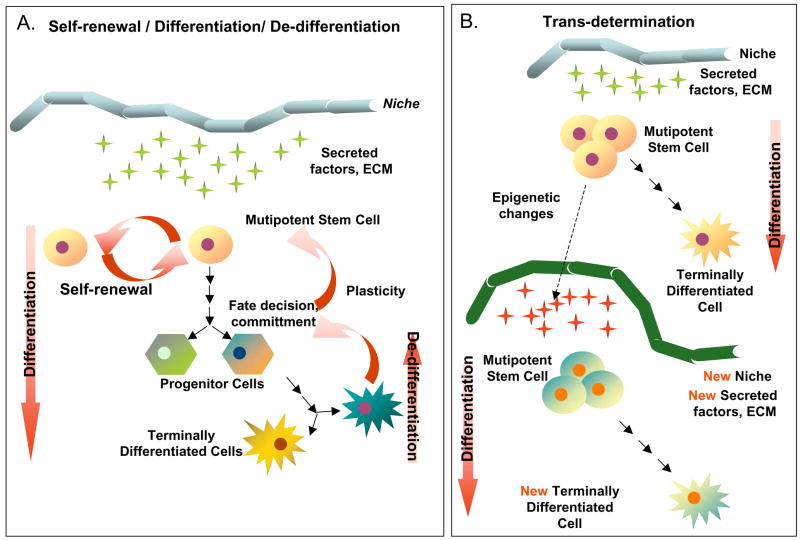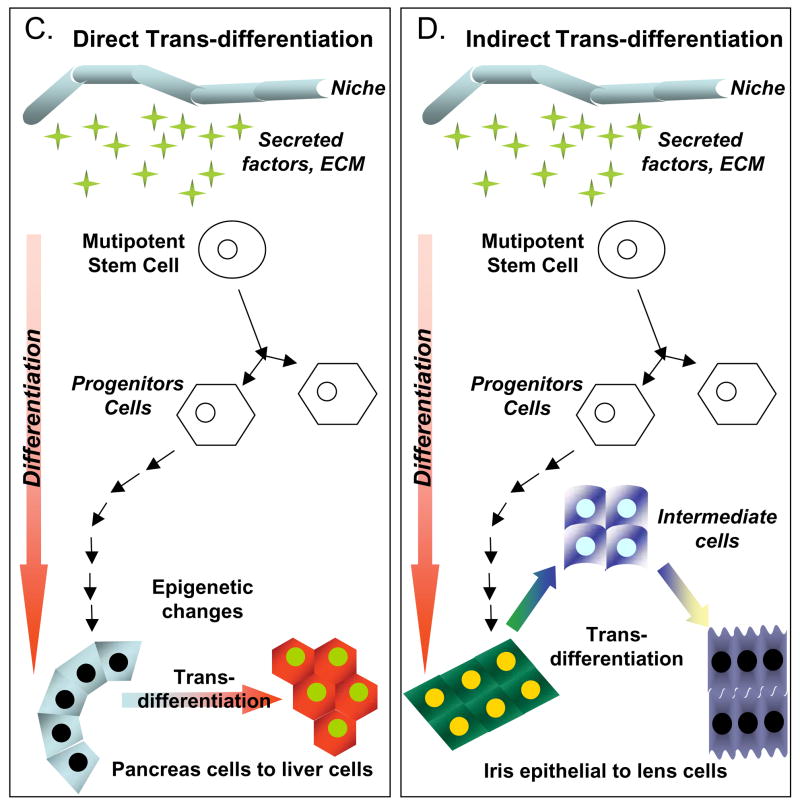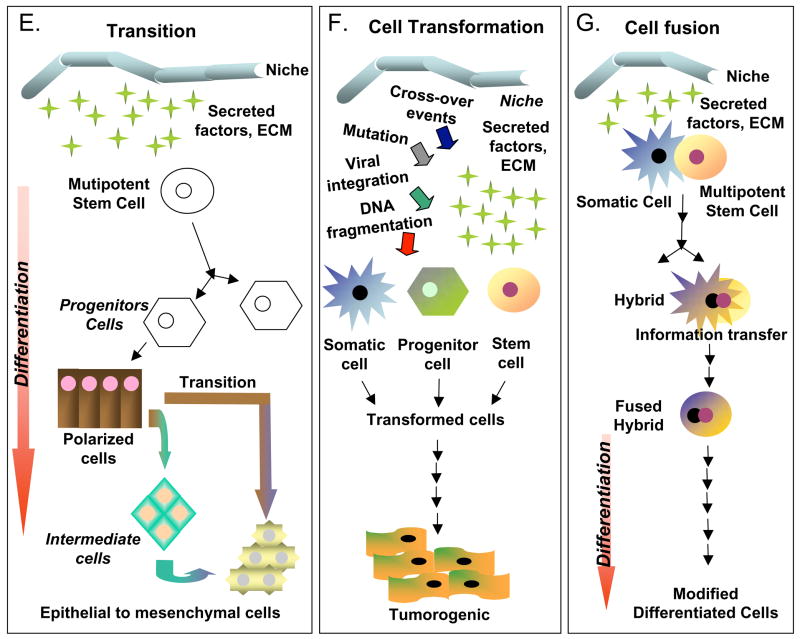Figure 4.
Illustrative examples of cell plasticity that might account for some of the differentiation events attributed to cardiomyogenic stem cells. A) Stem cells, which intrinsically self-renew, can differentiate into a single or multiple types of progeny, depending on their developmental potential. The differentiation process may not however be unidirectional, as there is some evidence, particularly in amphibians, to suggest that cell regression to a less differentiated state (de-differentiation) can occur. B) Trans-determination involves a “lineage switch” that can occur when stem cells are placed into a “new niche” environment. Such a switch is thought to be due primary to changes in local signaling and perhaps secondary to epigenetic modifications. C) Direct trans-differentiation is a lateral movement that permits a cell (stem or differentiated) to alter its fate and produce different progeny. Importantly, direct trans-differentiation should occur without cell division. D) Indirect trans-differentiation may involve a step of de-differentiation, with or without cell division. This process results in altered plasticity and permits phenotypic or fate changes in the progeny. E) Cell transitions, such as an Epithelial-to-Mesenchymal transition (EMT), involve the loss of cell polarity and the acquisition of migratory capabilities. Transitions such as these occur naturally during many stages of development, including gastrulation. F) Cell transformations are generally not considered by many stem cell researchers; however, the cultivation of cells in vitro can lead to chromosomal rearrangements, epigenetic changes and other DNA modifications. If severe, this can cause the cells to assume stem cell-like characteristics (immortality), but such cells are more analogous to forms of cancer, and therefore are completely inappropriate for therapeutic testing. G) Cell fusion events are common occurrences both in vitro (co-cultivation) and in vivo, in which adult cells may gain or show altered potentials, merely through the sharing of cytoplasmic factors (signaling molecules and transcription factors), after joining. These events can lead to pronounced reprogramming changes that lead to an altered cell phenotype. Although “cell-specific” markers and proteins may be expressed following fusion, these cells are rarely normal, and are not indicative of cell plasticity.



